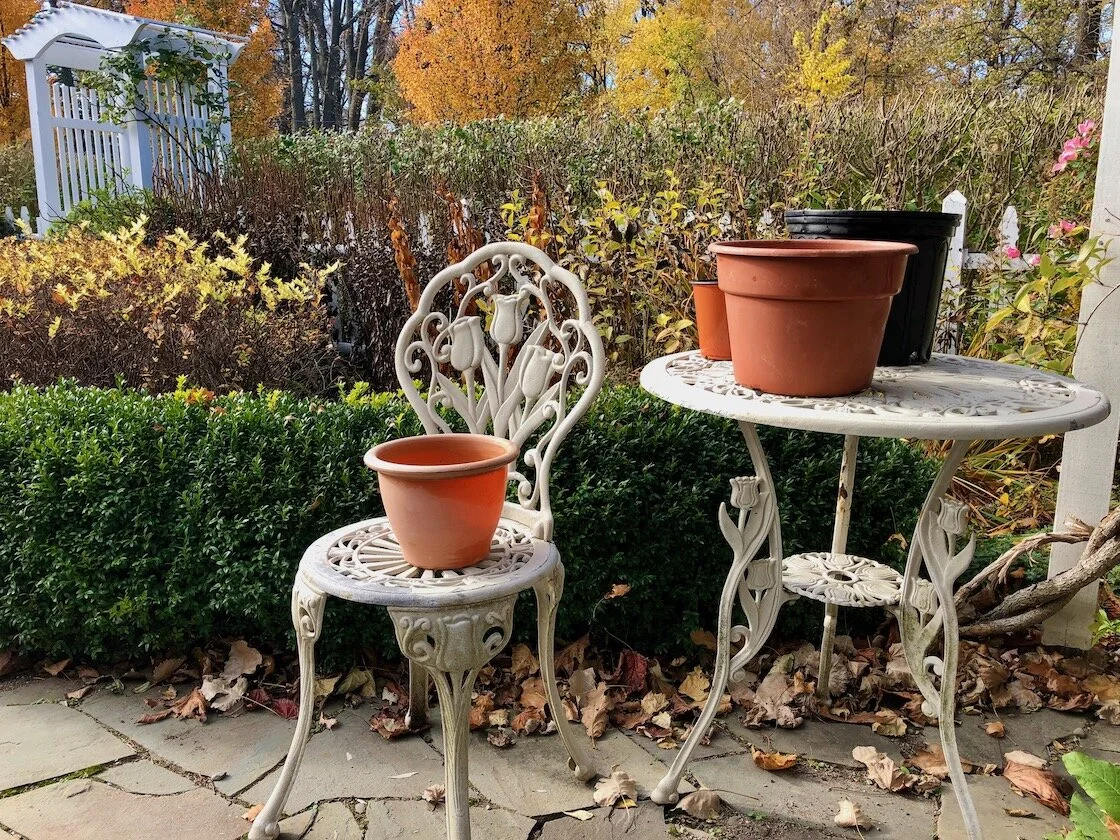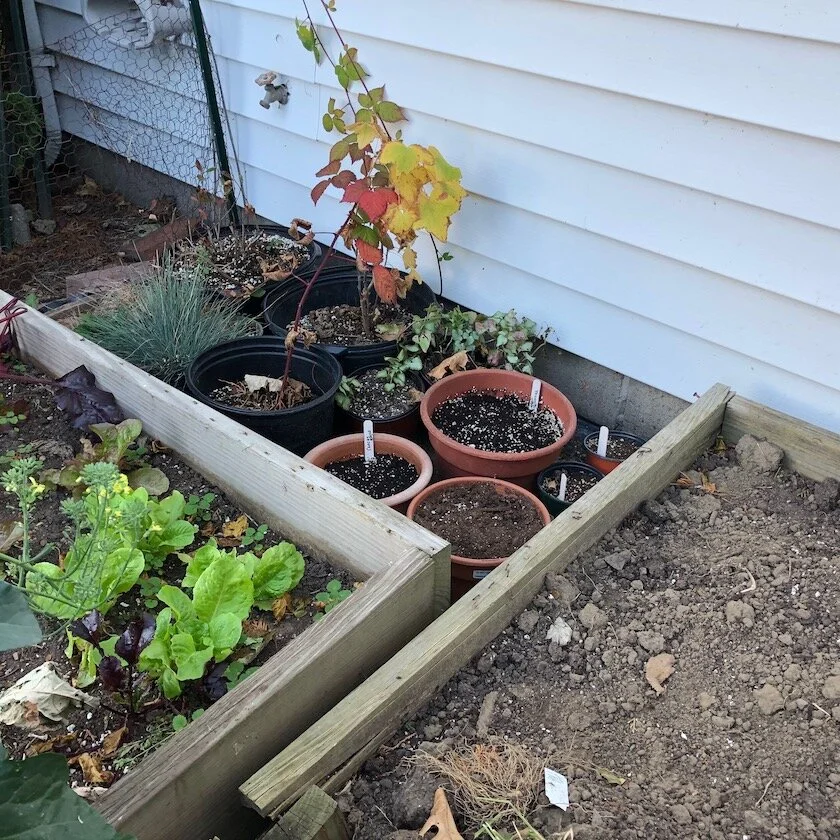Brighten Up Your Winter Window Sill With Forced Bulbs
Seriously, I can't dig one more hole - and why the heck did I order so many bulbs? Clearly, my enthusiasm got the best of me. And I've run out of places to plant them. If any of you can relate to this, read on.
There is another option if you're strapped for time, space and energy. Pot up extra bulbs, tuck them away in a protected spot to force and bring inside later. Forcing refers to coaxing bulbs to flower indoors after giving them a cooling off period outside. Basically, you mimic spring conditions and fool the bulb into blooming. It's worth it just to get a sneak preview of spring!
It doesn't take much to create a mini indoor show to brighten up a gray wintry day. Plant bulbs in a container that won't crack if left outside - forget about terra cotta and glazed pots unless they're frostproof. This is a good time to make use of random plastic pots you might have laying around. If you don't have any, you can easily pick up a few at most garden centers.
One thought about plastic pots: They're useful but not pretty. I pick sizes that will fit into my nicer ornamental containers so I can hide the plastic ones in them once I bring them into the house.
Here are a few things to know before you start.
1. Find a place to overwinter potted bulbs. Your goal is to maintain a temperature of 35-50 degrees. An unheated garage or shed will do nicely. I have neither, so I leave mine outside in a protected spot on the south side of the house and cover them with leaves to prevent freezing. Digging a trench in your vegetable garden and covering the pots with leaves would also work.
Cover with a heavy mulch of leaves or straw if you put them outside.
Make sure you can get at potted bulbs once it snows - cover them with plastic or a small sheet of plywood.
Label each one so you remember what they are and make a note of the date.
Cover pots with hardware cloth or wire mesh to keep rodents from munching them.
Tucked into a spot behind the vegetable garden,close to the house.
2. Different varieties of bulbs vary in cooling period requirements. Keep track of when you put them outside on your calendar so you know when to bring them in.
Daffodils: 10-12 weeks
Tulips: 8-10 weeks
Grape Hyacinths and most minor bulbs 8 weeks
If in doubt, more time is always better than less!
Tip: Use a container that is at least 6" in diameter or you won't be able to fit in enough bulbs to make it worth while. You'll get a better show if you stick to one type of bulb per pot.
How to pot them up:
1. Fill the container about 1/2 full with potting soil and place bulbs on top. Plant close together and use at least 6 bulbs per container for maximum impact. Flat side of bulb should face outward. Bulbs should planted at 4-6" beneath soil level.
2. Cover them with more potting soil. Fill to about an inch from the top and tamp down firmly.
3. Label the pot with type of bulb and date. Water them in and store for the winter in the spot you've chosen. I don't add food (Bulb-tone,Milorganite etc) because it attracts squirrels and chipmunks. The bulb contains the nutrients it needs to flower for year one. Come spring,if you decide to plant it in the garden,add fertilizer.
Bringing them inside:
Once you bring them inside, bulbs need a breaking in period where they can thaw out for a few days.
Put in a low-light cool spot between 50-60 degrees (closed in porches, rooms that are cooler and don’t have too much light are perfect.)
When little green shoots emerge, move pot into a warmer room and put in a sunny window.
Water weekly.
When blossoms emerge, move the pot out of full sun and keep it a little cooler to promote longer bloom.
After bulbs flower:
Don't cut the foliage, let it die back to nurture the bulb. Store in a cool spot in the house.
In spring, replant bulbs in the garden. Add a handful of high phosphorous fertilizer to the hole when you plant. Bulbs might take a year or so to produce flowers again. You can’t force the same bulbs again.
What if you wanted to plant directly in a frost-proof container like the one in the photo below? If you don't have glazed containers that are frostproof, fiberglass, wood or stone planters are another option. If you have an empty container, follow the same method I outlined above but leave it in place. This isn't part of the forcing technique, as you won't bring it inside, but it's a lovely way to display early tulips, daffodils or anything else you'd like to have in your garden. Place the bulbs an inch or two away from the side of the pot to keep them from freezing. Stick evergreen boughs in the container for extra insulation and winter color.
The container below was previously planted with a few little shrubs I popped in for winter entertainment. At the last minute, I added some dwarf daffodils (Tete a Tete) for a little spring color.
I had to tuck them in carefully because there wasn't a lot of room. I used my Japanese farmers knife and hands to dig between the root balls and into the soil.
I planted around the edges of the container in groups of 3 and covered the bulbs with about 6" of soil. I'll cover them with mulch to prevent freezing.
If you don't have leftover bulbs, take advantage of end of the season bulb sales at garden centers or look for on-line deals. If you decide to purchase them, pick varieties that are good forcers. Some are easier than others.
These are my favorites:
Minor bulbs:
Muscari armeniacum (grape hyacinths)
Iris reticulata
Crocus
Tulips:
Apricot Beauty
Species tulips
Daffodils:
Tete a Tete
Dutchmaster
You can keep planting right into December. Plant varieties that have different cooling off periods so you'll have continuous flowers all winter. And by the way, forced bulbs are excellent gifts for Valentines Day or any other festive occasion that arises. As a last minute gardening fix, I can't think of anything more satisfying!









